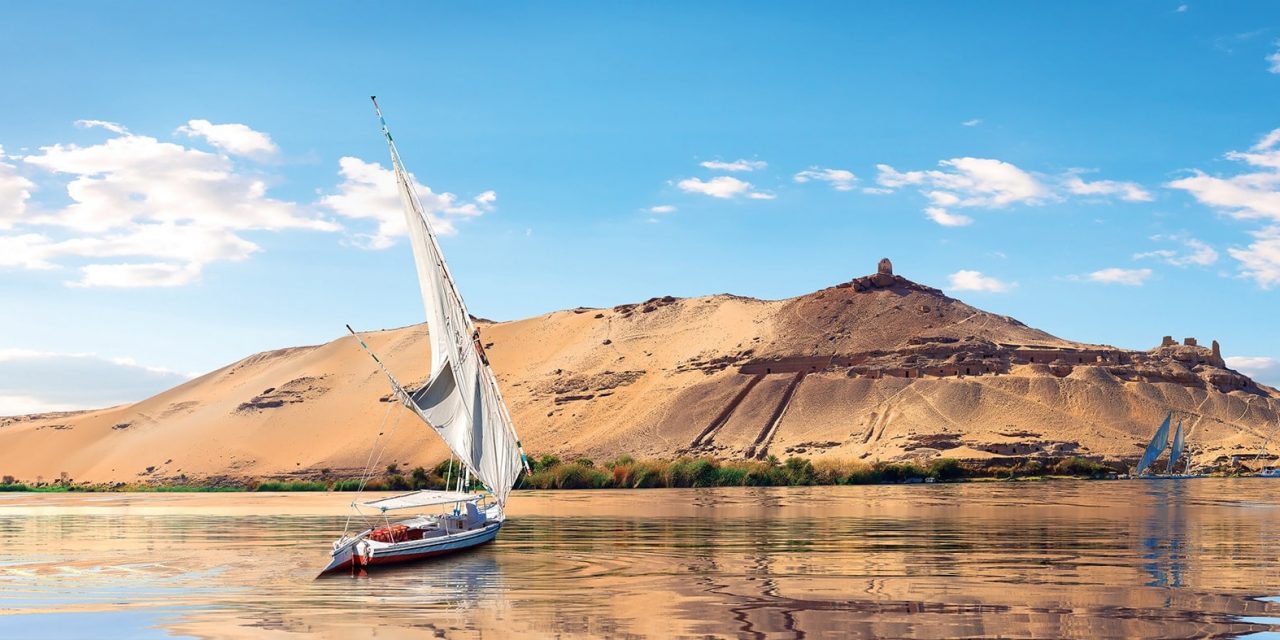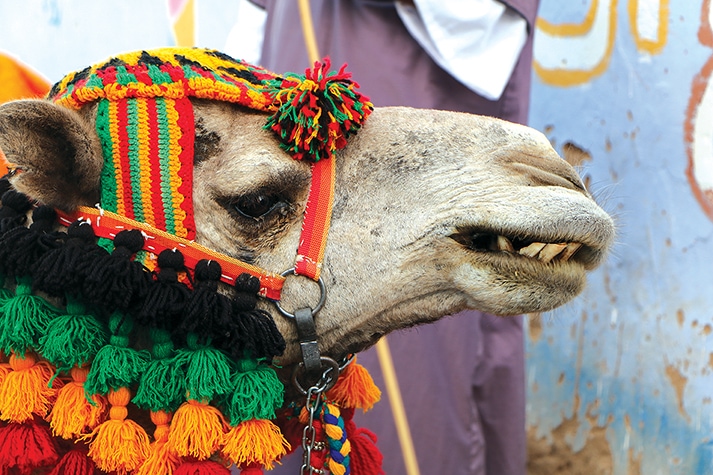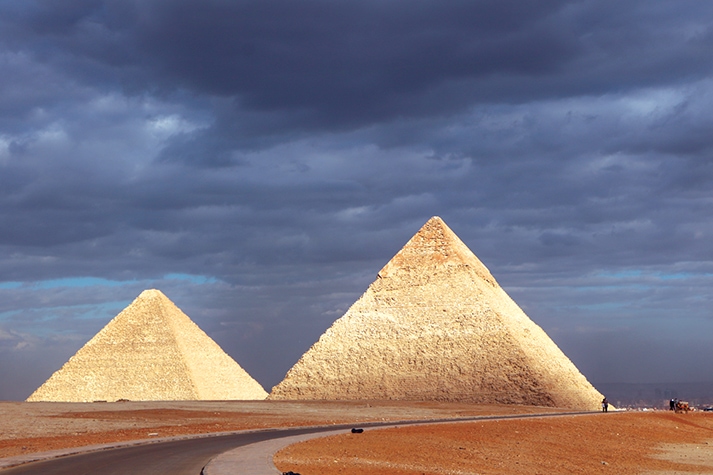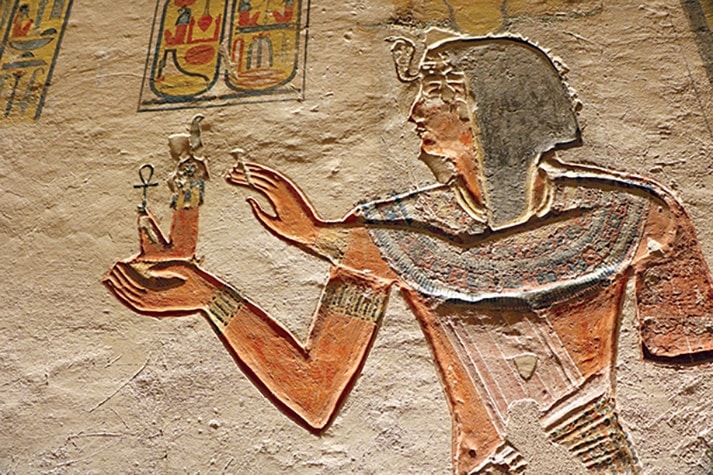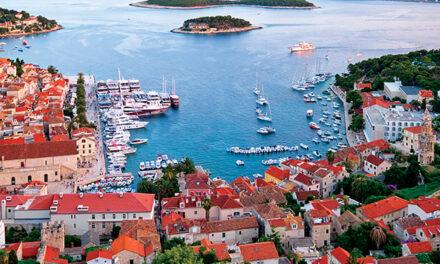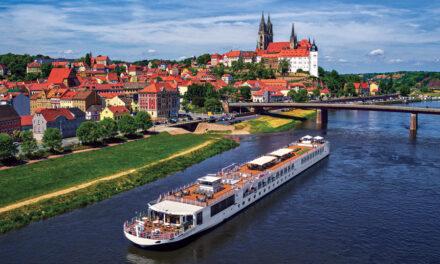Cruise
On the Nile
Article and Photography by Lisa TE Sonne
I can’t believe we are on the Nile, the longest river in the world, the “mother of civilization,” the river of Moses, King Tut, Cleopatra, Nefertiti, Somerset Maugham, Agatha Christie, and so many more.
My eyes open dreamily to see blue waters rippling past a river bank of palm trees, papyrus-like grasses, and a donkey and thatched hut reminiscent of a biblical manger.
I am waking on the top deck of the M.S. Mayfair plying the passage that thousands of feluccas with their distinct sails have journeyed over thousands of years. After seeing the ancient Egyptian sun god of Ra depicted in temples and tombs, and on cartouches and post cards in Cairo and Alexandria, I have enjoyed a solar nap, a more contemporary homage to the powerful sun overhead. It’s January, but I am comfortably warm.
I hear snatches of French, Spanish, and Arabic, as well as English, from some of my fellow passengers on the 74-cabin Mayfair. Some kids are giggling and splashing in the roof Jacuzzi. Tea is being served in porcelain cups to adults. And then, in the distance, a muezzin calls locals to pray to the one great God Allah, in this country whose history is carved and painted with images of ancient gods that look part lion, crocodile, jackal, owl, lion, cow, cat, or even alien.
My mind cruises through images that I have now seen in person, not just books or screens. The Egyptian museum in Cairo was an essential three-dimensional primer before going to tombs and temples. The museum’s 120,000 artifacts include King Tut’s gold mask, well-preserved royal mummies, and colorful hieroglyphics.
The museum is nestled among high-rises in the capital of Egypt, which bustles with 20 million living people. Across the Nile to the west, in Giza, famous monuments to the dead, including the Giant Pyramids and the iconic Great Sphinx, are roughly 4,500 years old. That’s thousands of years older than other ancient bucket-list destinations, such as Angkor Wat, Machu Picchu, the Aztec pyramids, and the Anasazi cliff dwellings.
River Life
To live a few days on the life-source Nile, my husband and I flew south to Luxor to begin our cruise to Aswan. My first image of the Nile at Luxor was of waters much bluer than the river’s commercial artery through Cairo. And beyond the blue, desert mountains contrasted with colorful hot air balloons.
Moored near the great Luxor Temple, the Mayfield became our moving home en route to shore excursions with wonderful guides. In only a few days, via horse-drawn carriages, air-conditioned vans, and shaded motorboats, we managed to visit the Valley of the Kings with King Tut’s tomb, the Valley of the Queens, the Temple of Karnak, the Temple of Rameses, the Temple of Horus in Edfu, the Philae Temple and Luxor Temple.
Countless guidebooks and web sites can share incredible facts about famous locations: Estimates say about 2.3 million stone blocks weighing about one ton each were used to build the Great Pyramid. The eyes alone on the Sphinx of Giza are two meters high. But to be there with your own eyes is to wish they, too, were two meters high. There is so much to take in and to wonder about. To touch one of these mammoth stones and to marvel at how it got there and who else has touched it in hundreds of generations of people.
Driving through open desert, then crouching through a long narrow passage and descending into the bowels of the Earth to see something astonishing awakens an innate thrill of discovery.
In our current world hurtling past Snapchat and 30 nano-seconds of fame, the carved walls and pillars and ceilings in these temples are still telling stories millennia later – tales of battle and bravery, tenderness and love. And they have created rock stars (literally) for the ages.
We also created our own little stories when going to have hibiscus tea in a Nubian village, visiting the Aswan Dam, clambering over rocks to see the Unfinished Obelisk, and helping make paper in the Papyrus Museum. But our touchstone was always the Nile River to smell the winds that swirl felucca sails and to watch the moods of the clouds and to feel the rhythms of the river’s tides.
Our well-appointed ship provided several ways to view river life: topside with winds and smells and sun, from the dining room with good food and drink, or from a balcony in the suite. Our room even had a deep bathtub with a sliding panel, so that we could see over the bed, through the balcony glass door, and onto the Nile itself.
We passed diverse tableaux – oasis-looking settlements, stretches of sand-piled deserts with a row of camel, and all-rock islands with only winged visitors. We passed the river life of fisherman and farmers in realms once ruled by great pharaohs. We passed cliffs with cave-like portals that stirred mystery about what might have once been.
When the sun blazed fiery farewell to another day, we saw it in the sky and reflected in the Nile, as it has been millions of times before. And later we could sleep on the Nile, under the stars of Moses and Pharaohs.
Yes. We really are on the Nile.
www.egypt.travel

